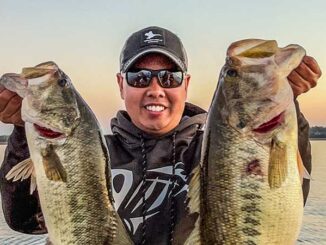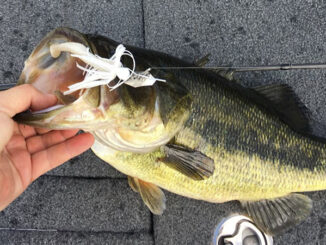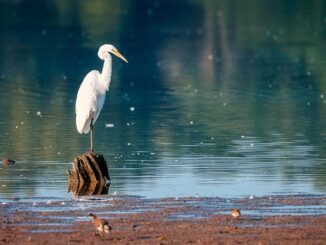
How to rig up for Toledo Bend bass in thick grass mats
Weights of up to 2 ounces can be needed to effectively punch Toledo Bend’s hay grass. So it takes some muscle.
It also takes the right equipment.
Here’s how Youngsville’s John Pecoraro gears up to pull chunky bass from this thick vegetation:
• Line — Hay grass can get downright thick, with some patches looking solid enough to stand on. And that means big bass have the edge, so you have to use heavy line to get them out of the thick stuff.
Pecoraro said braid is the only way to go, and his preference is 80-pound PowerPro. Sixty-five pound line is the minimum.
“You need every advantage you can get,” he said. “You want to get them out of that grass as quickly as possible.”
• Hook — A heavy flipping hook like the Strike King Greg Hack Attack Flippin’ Hook is mandatory here, since they have to take the combined pressure of hard hook sets, heavy braided line and grass-entangled fish.
“(Greg) Hackney has one of the best ones,” Pecoraro said. “You will not straighten it out — you can hook it to a tree and tie your line to your boat, and it won’t straighten.”
• The knot — Yeah, how you tie that flipping hook onto the braid is important. Pecoraro said he always snells his knots because of the way it pulls the hook’s point right into the bass’ mouths.
“The design of the knot kicks (the point of the hook) out,” he said. “A lot of times, when you set the hook, these big weights will open their mouths.”
• Bait — While many anglers like Sweet Beaver-type baits offering tight packages that slip through vegetation, Pecoraro prefers soft-plastics that imitate crawfish.
‘I like the action,” he said. “I find the crawfish lures work well. It’s the design of the claws — the way they fall.”
His favorites are Strike King Rage Tails and Cajun Lures’ Poodoo Craws.
• Rod — Flipping heavy weights all day can be a test of an angler’s stamina, but Pecoraro has found a rod that is heavy enough to wrestle big bass out of thick grass but helps alleviate some of the strain of that huge tungsten swinging on the end of his rod.
The Lew’s 7-foot, 11-inch Power heavy-action rod with a moderate-fast tip is his go-to rod.
“That tip takes that weight off your wrist and forearm,” Pecoraro said. “It really cuts down on the fatigue. And the longer rod gives you more leverage.”
• Reel — Speed is the concern here, so Pecoraro goes with a Lew’s 8.3:1 SuperDuty.
“The idea is to get that fish up and out of there as soon as possible,” he said. “You want to be able to take up line as quickly as possible.”
He also said the reels are tough and priced right.
“They’re $160,” Pecoraro said. “They just make more sense than spending $300 for one; I’d rather get two than one.”
• Hold it steady — Bass can be anywhere within a specific hay grass mat, and because it’s a reaction bite, Pecoraro said it’s important to cover all possible openings. And that means anchoring.
Yeah, you could stand on the trolling motor, but that will wear you out quickly — and the odds are you’ll end up washing the hay grass, especially if the wind is blowing you into the mat. And throwing out and picking up an anchor will get old fast.
Pecoraro said that’s where his dual Power-Poles come in handy.
“They hold me steady so I can work an area thoroughly,” he said. “And with two of them, I don’t have to worry about the wind blowing me around.”


